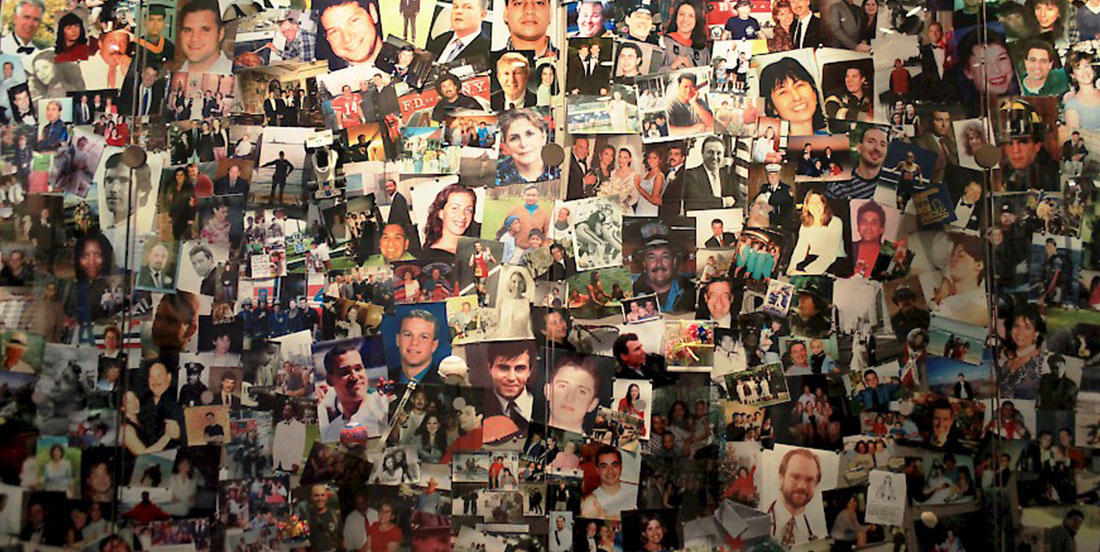Low-probability, high-consequence situations, such as mass fatality events, often stress or overwhelm local response capabilities within a very short timeframe. The ability to handle these situations differs greatly depending on the size of the jurisdiction affected and its readily available resources. New York State Division of Homeland Security and Emergency Services Research conducted research to address this issue.
Mass fatalities are of great interest to New York given the ongoing threats of mass violence, as evidenced by the recent shootings in Las Vegas and Texas. In addition, research has confirmed that New York State leads the nation in the total number of mass fatality events, with more than 500 incidents to date. As evidenced by recent terrorist plots in New York City, the next mass fatality event could potentially be around the corner.
A Multifaceted Research Effort
To better understand the ways in which past mass fatality events have been handled as well as best practices that have been learned, the New York State Division of Homeland Security and Emergency Services (DHSES) undertook in 2016 a multifaceted research effort, in conjunction with the New York State Department of Health, to examine past events more closely. The research included an initial literature review, followed by analysis of after-action reports from identified critical incidents. Interviews with seven key response personnel were conducted, and a national survey of 191 responders was administered. The target audience for this research is the emergency response community, to include public safety and public health personnel. The research included qualitative interviews and quantitative data captured through a nationwide survey as part of a comprehensive research initiative.
Overall, the research led to key findings, which include the identification of eight major challenges commonly associated with the management of mass fatality events. According to the national survey, less than half (35%) of the participants had high or very high confidence in their jurisdictions’ ability to handle major mass fatality events. The major challenges include the following:
- Emergency communication and information sharing
- Assistance for victims’ families
- Response coordination
- Inadequate resources
- Ways to address responders’ posttraumatic stress
- Inadequate training and exercises
- Victim identification (and associated cultural issues)
- Collaboration with media
Communication and information sharing gaps can easily develop due to the sheer number and diversity of individuals, as well as organizations that respond to a large-scale event. This challenge is often compounded when dealing with worst-case scenarios – such as mass fatalities – because the responders and stakeholders may not have worked together on a routine basis. Relationships are at the forefront of preparedness. When an event becomes “all hands on deck,” being familiar with other response agencies and the way in which they typically operate are at the epicenter of a coordinated response. These relationships can be formed before mass deployment via training or exercises, including: full-scale drills, disaster-specific run-throughs, and tabletop exercises. Cross training and collaboration among various disciplines has been seen as an implemented best practice with the goal of integrating emergency response functions on a different level.
Although the number of victims varies for large-scale events, it is important to remember that, for each victim, there are concerned family members and loved ones they are leaving behind. The recovery process becomes just as much about helping the families of the victims to cope and receive some sort of closure as it does managing the emergency response. Family Assistance Centers and Disaster Missing Persons Call Centers can aid in this effort. It is also important for a jurisdiction to be able to manage issues such as post-disaster ceremonies and dignitary visits because they typically help bring closure to the families of the victims.
Through the national survey, it was reported that only 27.2% of respondents believe that their jurisdictions have the resources to successfully manage a mass fatality event, and 71.3% of respondents believed that more effort and resources should be dedicated to preparing for mass fatality events. Resource gaps can exist in a multitude of areas, including limited morgue space. Relationships with funeral homes can assist in the establishment of temporary morgue space. Also, in some situations, regional or state-owned refrigerated trailers may be available for use; however, these are less common.
If the event is large enough to warrant a federal disaster declaration, Disaster Mortuary Operational Response Team (DMORT) assistance is typically provided. DMORT was formed under Emergency Support Function #8 (ESF #8) with the objective of providing victim identification and mortuary services in times of extreme need. Although it can be a great resource of help in terms of large-scale disasters, in many cases, events will not meet the threshold required to be eligible for DMORT assistance. Coroners and medical examiners take on a key diverse role following mass fatality events – one that is crucial in not only effectively and efficiently handling the aftermath, but one that also greatly affects the healing and recovery process of families of victims and the community alike.
The physical and mental health of responders cannot be ignored, both during a response as well as after. During a response, there is the potential for prolonged operational periods. Without being able to rest, responders will not be able to do the quality of work they are capable of doing. Incident commanders and safety officers must ensure appropriate operational periods and responder downtime, but this is sometimes easier said than done. Following a major disaster, peer-to-peer support is beneficial, as it allows responders to “debrief” with others who have been in similar situations.
Media Concerns
In today’s environment of social media and 24-hour news cycles, working with the media is another important consideration. Worst-case scenarios are typically accompanied by chaotic circumstances. The competition among news agencies adds to the disorder. Some media will go to drastic measures to get a “good story,” including impersonating family members when calling the hospital in the hopes of learning new information, as noted during the interviews with responders. In some of the circumstances analyzed, the rush for information led the media to publish false reports and fed rumors that, in turn, caused more chaos and panic. No one can fully anticipate how the media is going to react or the moves they will make. Having a plan in place for handling the media is essential, particularly because, depending on the size, scope, and scale of the incident, both national and international media could be drawn to the event. The media should be viewed as a key partner in helping to get the message out to the public, but that partnership requires ongoing collaboration and trust.
Learning from the ways in which past large-scale incidents have been handled is crucial in understanding the best way to approach future events. In a November 2008 interview, Rahm Emanuel, then chief of staff for president-elect Barack Obama, stated, “You never want a serious crisis to go to waste.” Jerome Kahan explained in an August 2017 article how this thinking allows “decision-makers to be proactive rather than reactive in their thinking” and could potentially streamline the way in which worst-case scenarios are managed in the future.
Having plans and being able to implement them in times of chaos are two very different matters. Plans are of value when they have been continually exercised and updated. Without ongoing attention, plans will not possess any operational value, particularly in the instance of mass fatality events. Although various unpredictable factors accompany an unforeseen situation, it is possible to have a framework and partnerships in place that make the handling of large-scale events considerably more manageable.
Since society is continually expanding and changing, preparedness requires repeated assessment and planning. Without continual attention, planning, and practical application, a community will not be able to keep up with changing times and technology. With threats such as terrorism, increased population demands, and other factors on the rise, the risk associated with the occurrence of a worst-case scenario is also increasing. Disasters test the preparedness of an entire community, not just its emergency functions. Preparation for events of any magnitude, let alone one of increased scale, is vital in keeping the population protected from harm.

Terry Hastings
Terry Hastings is the senior policy advisor for the New York State Division of Homeland Security and Emergency Services (DHSES) and an adjunct professor for the College of Emergency Preparedness, Homeland Security and Cybersecurity at the State University of New York at Albany. He oversees the DHSES policy and program development unit and a variety of statewide programs and initiatives.
-
Terry Hastingshttps://www.domesticpreparedness.com/author/terry-hastings
-
Terry Hastingshttps://www.domesticpreparedness.com/author/terry-hastings
-
Terry Hastingshttps://www.domesticpreparedness.com/author/terry-hastings
-
Terry Hastingshttps://www.domesticpreparedness.com/author/terry-hastings

Katie Joel
Katie Joel is currently an analyst with the New York State Division of Homeland Security and Emergency Services. She has done research surrounding preparedness capabilities associated with mass fatality incidents.
-
This author does not have any more posts.






